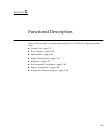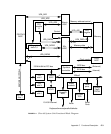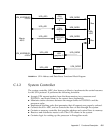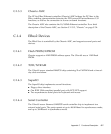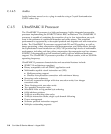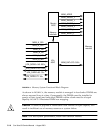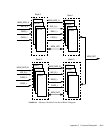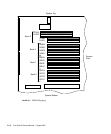
C-6 Sun Ultra 60 Service Manual • August 2001
C.1.3 PCI Bus
The peripheral component interconnect (PCI) bus is a high-performance 32-bit or
64-bit bus with multiplexed address and data lines. The PCI bus provides electrical
interconnect between highly integrated peripheral controller components, peripheral
add-on devices, and the processor/memory system.
There are two PCI buses (
FIGURE C-1). All PCI slots can accommodate “long” PCI
cards, and each slot supplies up to 15W of power.
Each bus is controlled by the UPA-to-PCI bridge (PSYCHO+) ASIC. There are also
two on-board controllers, the Symbios 53C876 SCSI controller and the PCI-to-
Ebus/Ethernet controller (Cheerio) ASIC, on the 33-MHz PCI bus.
The first (“A”) bus is a one-slot, 3.3-Vdc, 64-bit or 32-bit, 66-MHz bus. If you plug a
33MHz PCI card in this slot, circuitry detects the card and switches the clock to
33MHz.
Note – 5V PCI cards will not work in this slot.
The second (“B”) bus is a three-slot, 5.0-Vdc, 64-bit or 32-bit, 33-MHz bus. This bus
also supplies 3.3V, and 3.3V PCI cards can also be used.
C.1.3.1 PSYCHO+ ASIC
The UPT-to-PCI bridge (PSYCHO+) ASIC controls the PCI buses. It forms the bridge
from the UPA bus to the PCI buses. For a brief description of the PSYCHO+ ASIC,
see Section C.1.15.4, “PSYCHO+” on page C-34.
C.1.3.2 Symbios 53C876 SCSI Controller
The Symbios 53C876 SCSI controller provides electrical connection between the
motherboard and the internal and external SCSI buses to the PCI bus. It supports
both fast wide and UltraSCSI operation.
The Symbios controller is two SCSI controllers on the same PCI slot. Controller “A”
is used to interface to internal devices. The second controller, controller “B”, is used
to interface to external devices.






